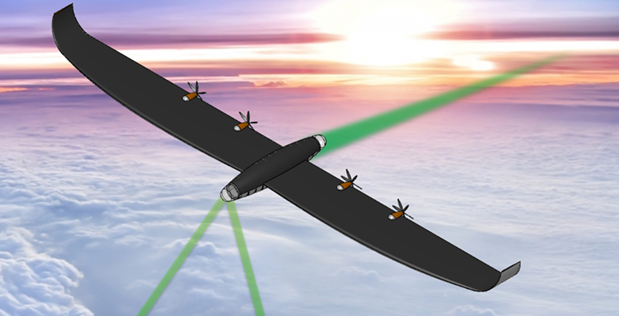
As part of a project that could rethink wireless power and energy distribution, the Defense Advanced Research Projects Agency (DARPA) is plotting out the Persistent Optical Wireless Energy Relay (POWER) program – and working toward multipath, wireless energy networks.
If successfully demonstrated, the project could change the face of power distribution through airborne optical energy relays. These relays would allow ground-sourced lasers to be partnered with high-altitude long-range transmission and serve as the foundations of new wireless energy networks without attempting to remake the physics used successfully in existing wireless communications.
“This is the internet for energy – harnessing resilient, multipath networks to flow energy from abundant sources to energy-starved consumers,” Col. Paul Calhoun, POWER program manager in DARPA’s Tactical Technology Office, said. “The military faces particularly acute energy challenges, which are driving this innovation. We often must operate far from established energy infrastructure and rely on liquid fuels that require precarious supply lines.”
In particular, the military’s issues stem from the fact that long-range, endurance, or significant weapons delivery capabilities also need to be physically large to carry necessary stored energy as a liquid fuel. By contrast, if the POWER project were successful, the wireless power transfer network platforms would act as conduits rather than containers of such energy, allowing them to be smaller and cheaper but with potentially unlimited range and endurance.
Generated power is converted into a wave, and that wave is sent through free space, which is then collected through an aperture, where it is converted into usable electricity. Conversion is the tricky part, though, as a multipath network like POWER proposes requires the ability to quickly convert from a propagating wave to electricity and back again at each node along the way – and with each conversion, losses build up.
Traditionally, this had made them impractical for pursuit.
However, POWER proposes to rethink the approach and find a workaround to ultimately greatly compress transport timelines without sacrificing the resiliency of distributed energy.
“The POWER program will develop efficient power beaming relays that redirect optical energy transmissions while maximizing beam quality at each point along the way, selectively harvesting energy as needed,” Calhoun said. “It is a three-phase development effort, culminating in a compelling energy relay flight demonstration.”




